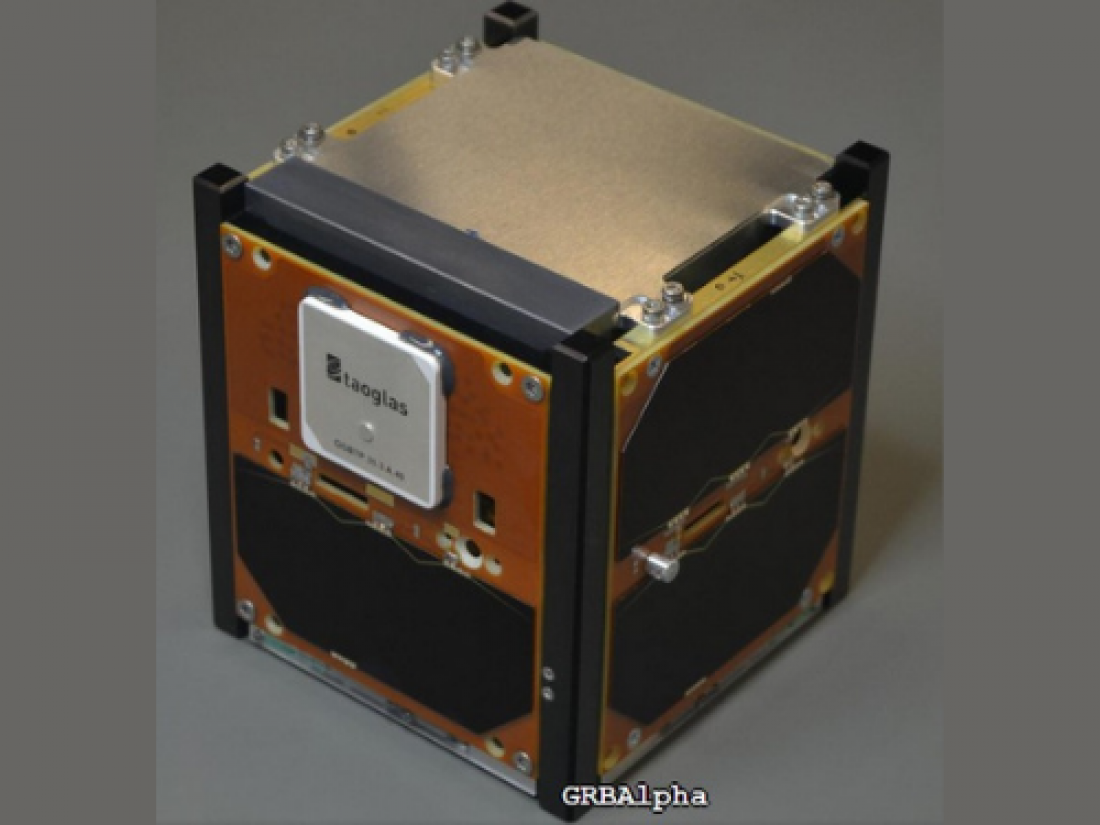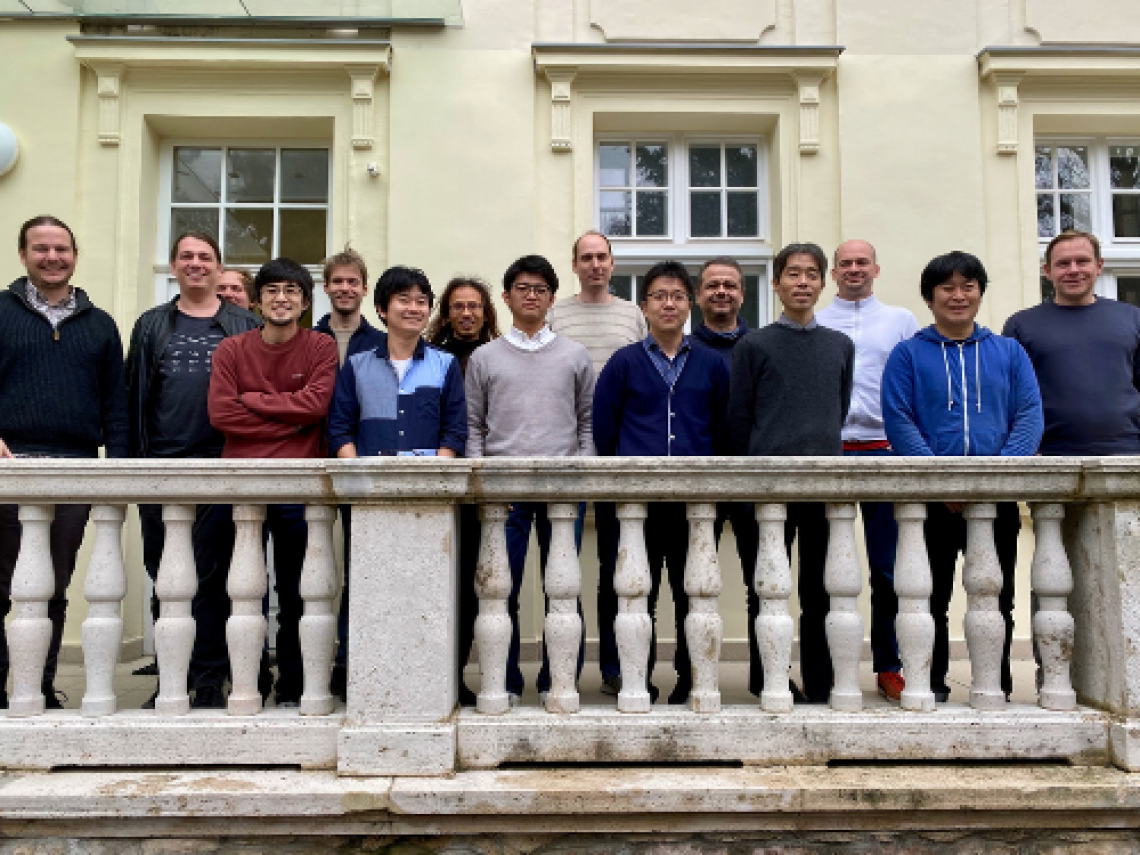The GRBAlpha nanosatellite measures 10 cm on each side. It carries a 75 × 75 × 5 mm CsI (Tl) scintillator, read out by a dual-channel multi-pixel photon counter (MPPC) setup, to detect gamma-ray bursts.
A nanosatellite that Hiroshima University (HU) researchers helped develop was sent to orbit to monitor gamma-ray bursts in space.
It was launched on a Soyuz rocket that blasted off in Russia on Monday, March 22.
The GRBAlpha is a 1U CubeSat developed and manufactured by an international research team comprised of Hungary’s Konkoly Observatory, HU, Eötvös University, Nagoya University, Masaryk University, and space technology firms Spacemanic and Needronix.
It is the first of the eight nanosatellites planned to be dispatched to space for the CubeSats Applied for Measuring and Localising Transients (CAMELOT) mission which would perform all-sky monitoring for gamma-ray bursts. Gamma-ray bursts are the strongest and brightest explosions in the known universe generated when extremely dense neutron stars merge in distant galaxies. This extremely violent astrophysical event is believed to result in a black hole or a new supermassive neutron star.
The CAMELOT mission aims to demonstrate the feasibility of timing-based localization, which utilizes the triangulation principle with the gamma-ray photons' different arrival times, using its nanosatellite fleet to determine the source position of the extremely energetic explosions with an accuracy of ∼10′.
The members of the CAMELOT project team. On the far left is team representative Norbert Werner. Japanese members of the international team are mostly composed of HU researchers.
The team behind the mission is led by Norbert Werner. He has been a specially appointed associate professor at HU in the past and is now a researcher at the university.
HU Assistant Professor Masanori Ohno, who is currently studying in Hungary, was also deeply involved in the nanosatellite manufacture. HU graduate students, meanwhile, played an active role in the development and construction of the satellite-mounted detectors.
Research is currently being conducted for a planned second launch from the United States.
###
About Hiroshima University
Since its foundation in 1949, Hiroshima University has striven to become one of the most prominent and comprehensive universities in Japan for the promotion and development of scholarship and education. Consisting of 12 schools for undergraduate level and 4 graduate schools, ranging from natural sciences to humanities and social sciences, the university has grown into one of the most distinguished comprehensive research universities in Japan. English website: https://www.hiroshima-u.ac.jp/en




